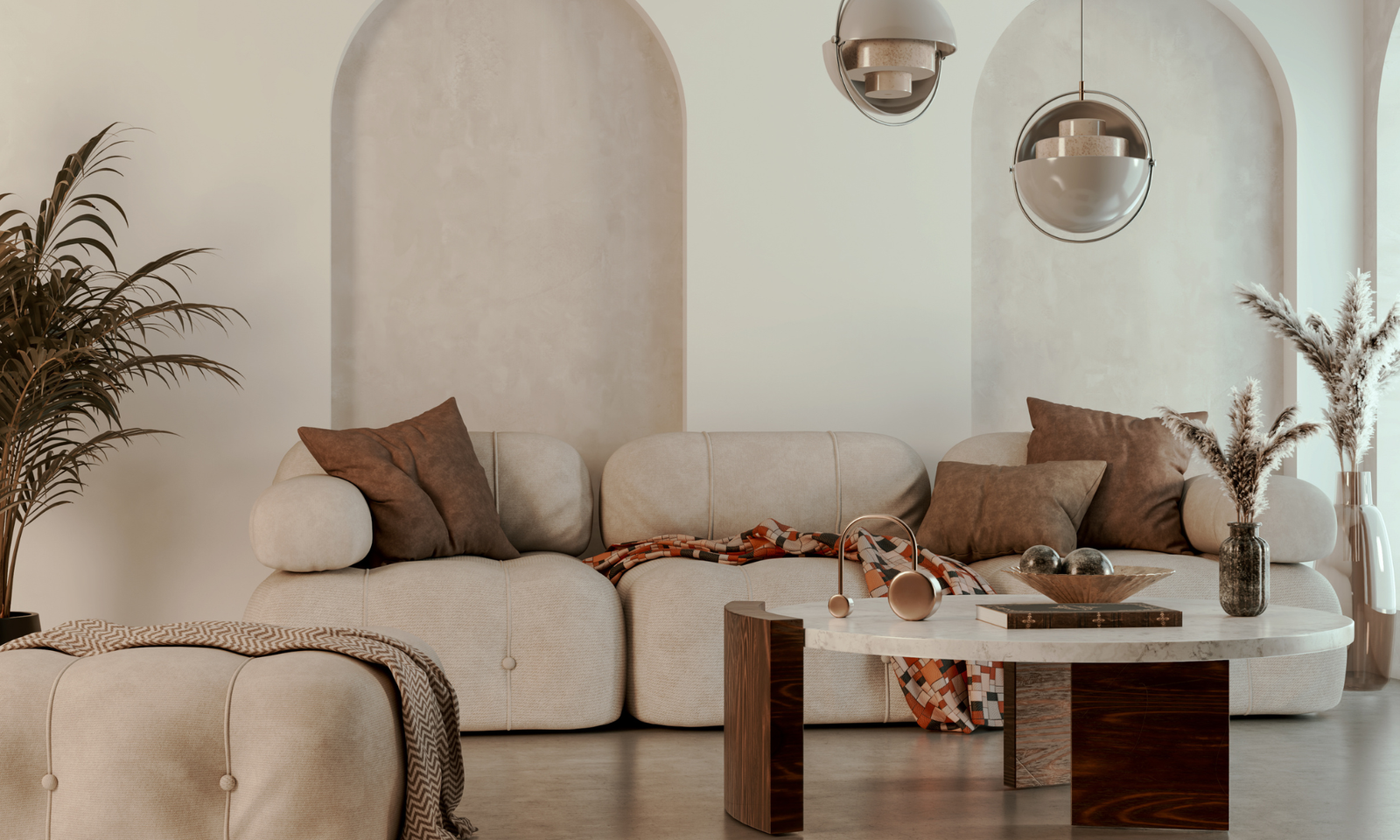Japandi design – a mix between Scandinavian design and Japanese interior or more like a combination of warmth and simplicity. A Japandi living room is the perfect balance between cozy minimalism and functional design.
I would say this style brings together the best of both worlds – the serene, wabi sabi elements of Japanese design and the soft, inviting nature of Scandinavian decor. But to the main question of this post – how do you create a a Japandi living room? Let’s break it down step by step so you can bring both warmth and calm into your home.
And don’t forget to save any of these ideas to a relevant Pinterest board! Just click on the Pinterest logo!

Understanding the Japandi Style
So, what is Japandi design? This style is all about balancing both style and comfort. Shortly said, it blends the clean lines and natural elements of Japanese interiors with the coziness and practicality of Scandinavian homes. You can dive deep and read all you need to know about Japandi interiors here.
- Japanese Influence: Wabi sabi philosophy, embracing imperfection, natural materials and neutral tones.
- Scandinavian Influence: Hygge warmth, light woods, soft textures and a focus on comfort.
You can think of it as a space that feels both decluttered and inviting, where every piece has a purpose and where nature plays a key role in the design.
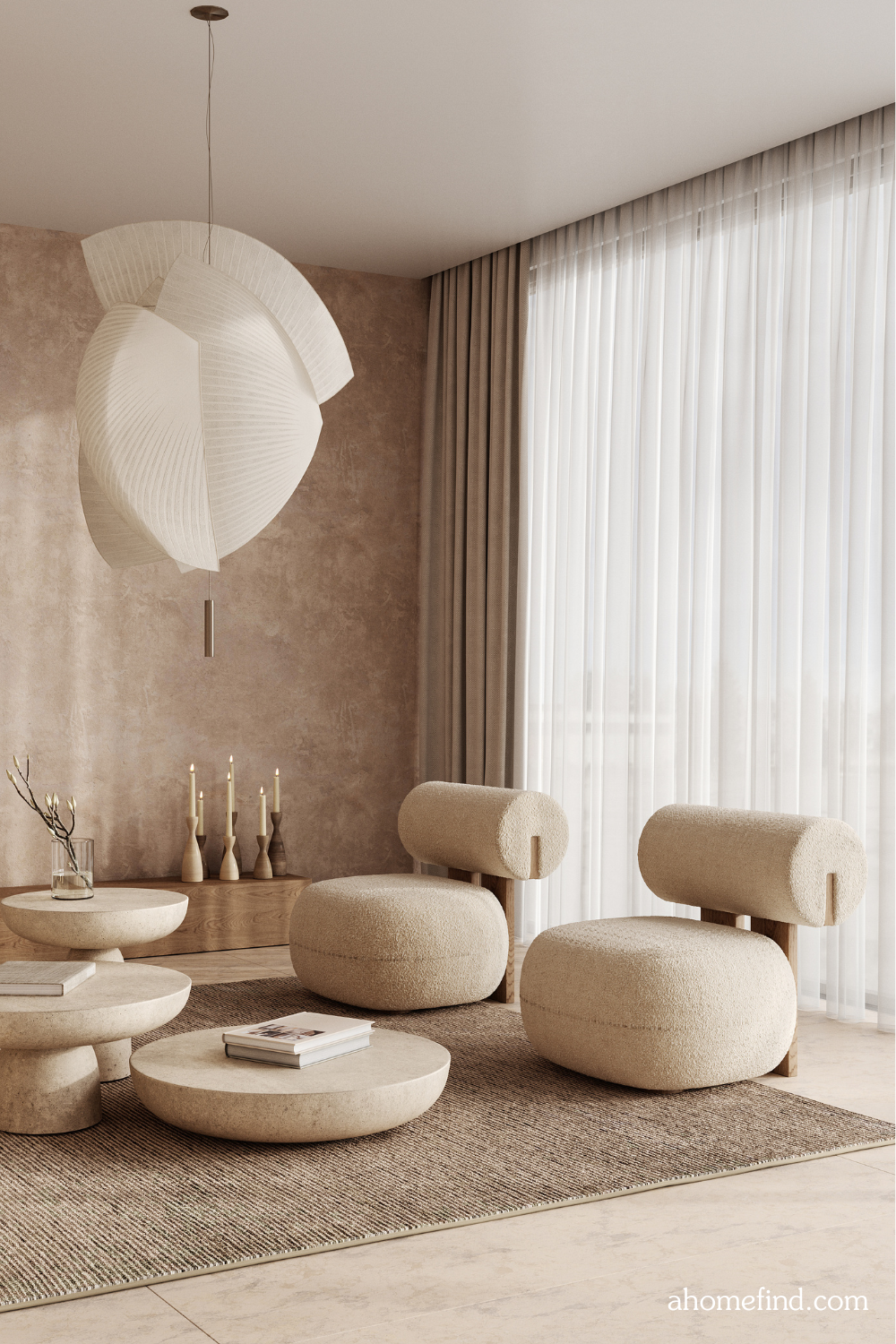
1. Start with a Japandi Color Palette
Let’s start with the basics – the color palette. The foundation to any Japandi living room is a neutral and earthy color palette. Here’s how you should think when choosing colors:
- Base Colors: Stick to muted, natural hues like warm whites, beige, greys and soft taupes.
- Contrast Tones: Incorporate darker elements like charcoal, black or deep brown to add depth.
- Accent Colors: Keep it subtle – muted greens, terracotta or soft pastels work beautifully.
Example: I love working with contrasts in my home and if we will implement this in a Japandi living room I would choose a warm off-white shade on the walls. Then I would add an accent wall with wood panels. On this wall I would then add black wooden shelves with some wabi sabi decor pieces and maybe a vase with flowers on it. This will create a beautiful contrast.
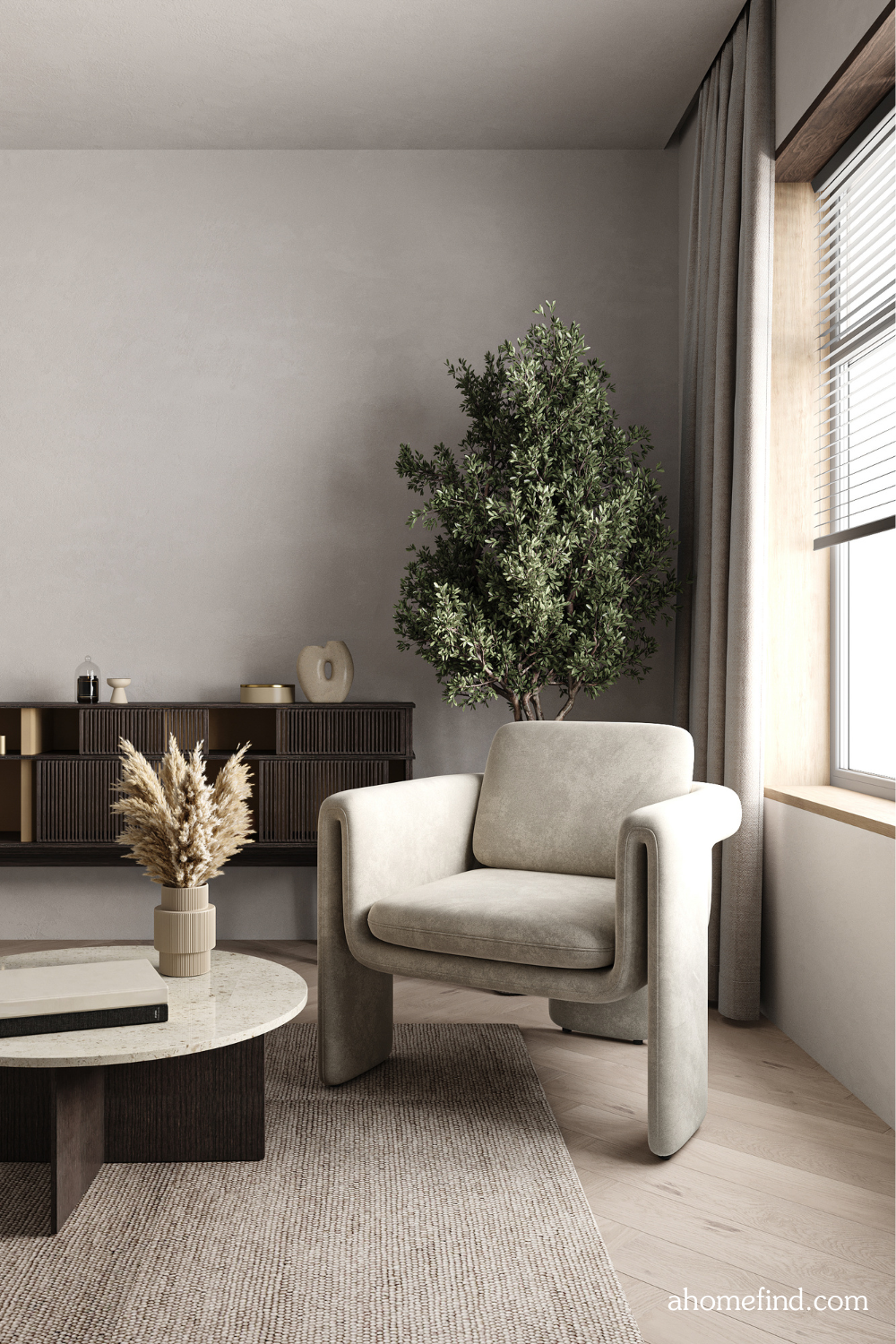
2. Choose Simple, Functional Furniture for a Japandi Living Room
Now that you have your color palette complete, it’s time to look for the big furnitures. When choosing furnitures for your Japandi living room it’s important to look for 3 things – clean lines, natural materials and multifunctional pieces. I am all about choosing budget decor pieces, but only when it comes to small decor pieces.
When I decorate my home I always invest in good, quality furniture pieces that will last a lifetime – especially if they’re timeless. One of my favorite places to find high-quality, sustainable, Japandi-inspired furniture is WoodFurniture.com.
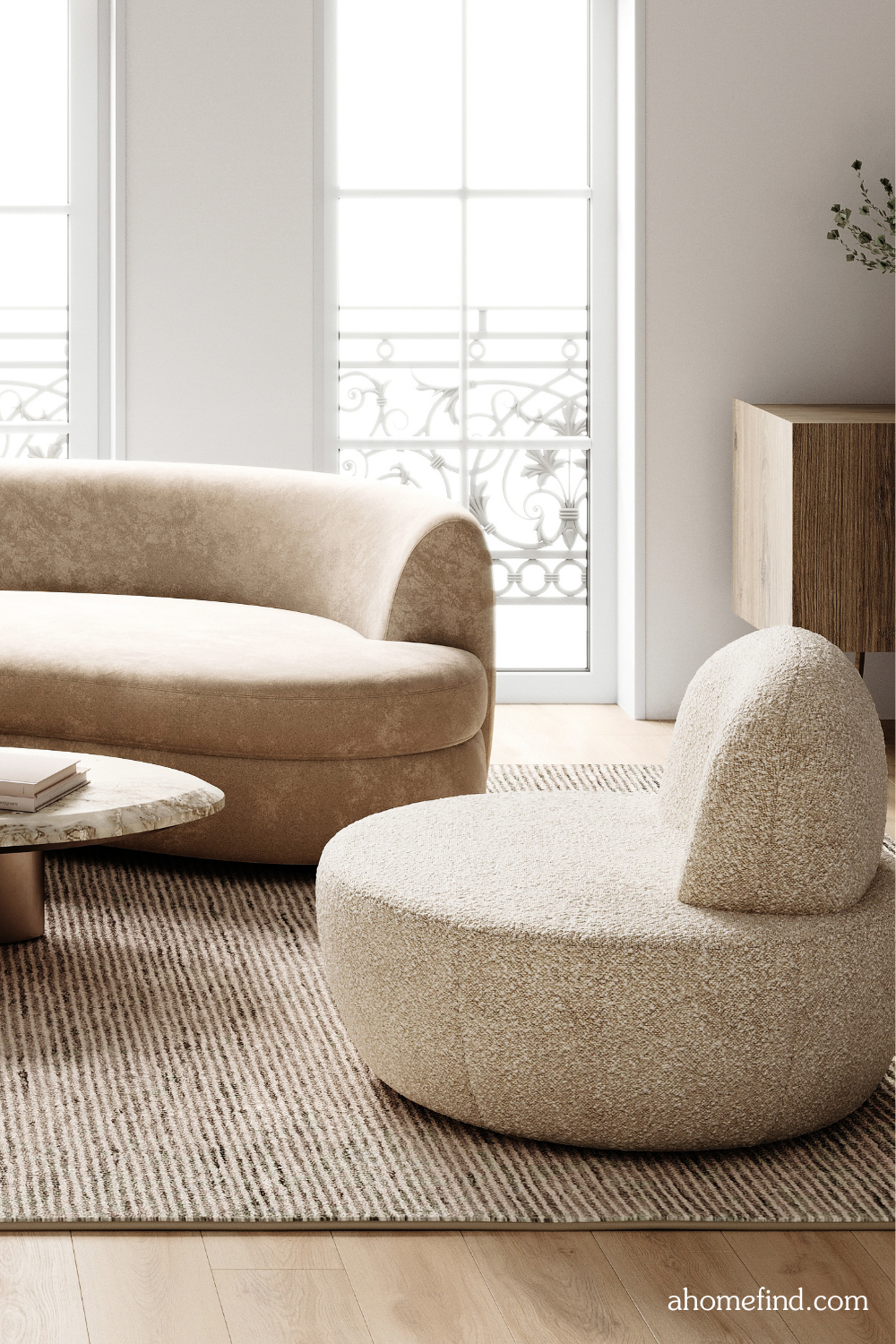
I absolutely love their beautiful selection of solid wood pieces since they align perfectly with the Japandi aesthetic. Picture clean-lined oak coffee tables, minimalist shelving and handcrafted wooden chairs that bring both warmth and a sense of calm to your space. I will give you 4 examples of pieces to look for:
- Low-profile seating: Look for sofas and chairs with clean lines and low legs – like this one – for a grounded look.
- Minimalist coffee table: Simple shapes like round or oval in wood or stone – like this one.
- Multifunctional pieces: A bench that is both stylish and practical, like this one.
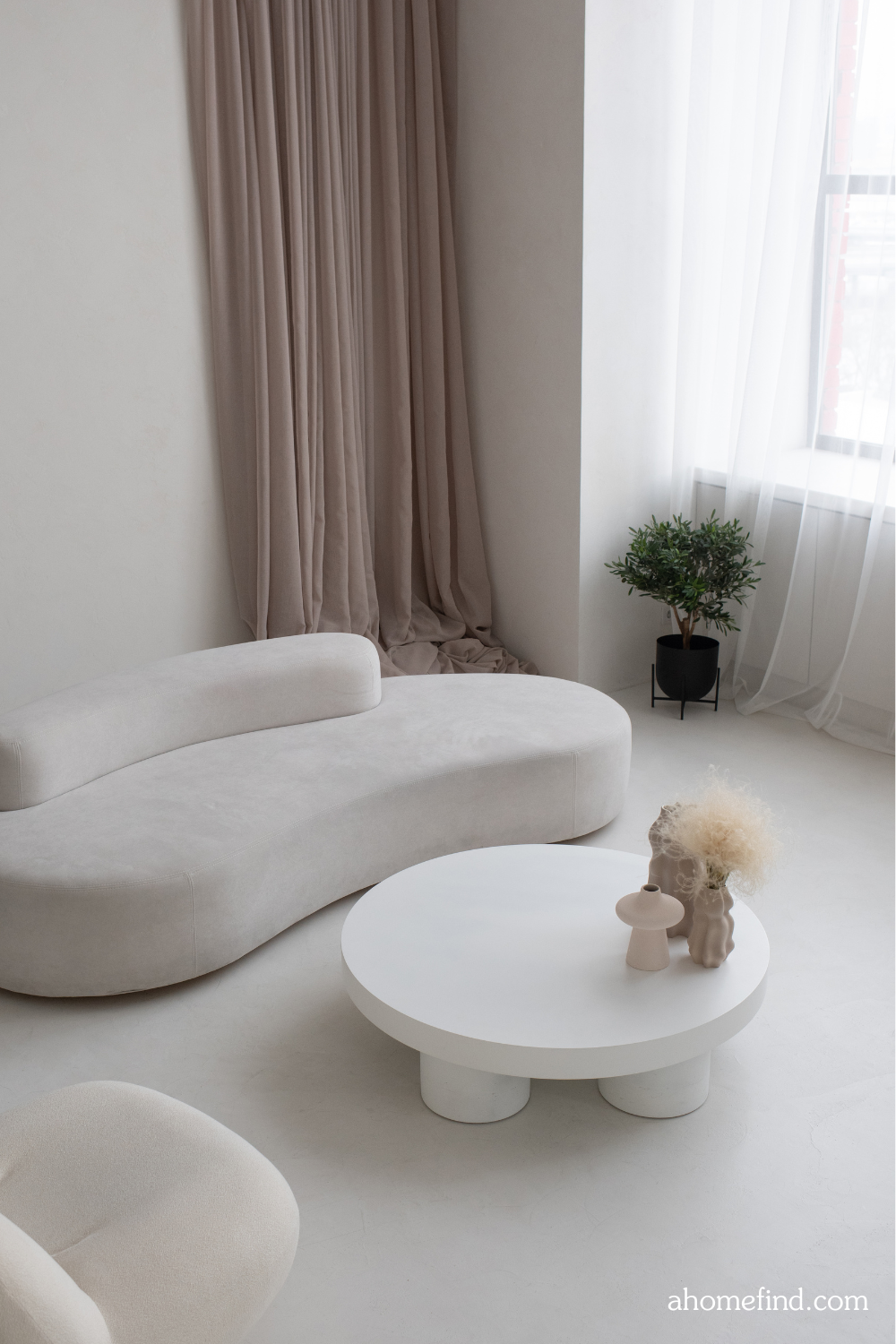
3. Master the Art of Minimalism (Without it Feeling Cold)
Okay, so in a Japandi living room, minimalism is key. However, a misunderstanding about minimalism is that it is empty or sterile – and of course that could be the case but not in a Japandi living room.
It’s all about finding the right balance between it being minimal, warm and inviting. A great step to start with is of course by decluttering your space. There are lots of different decluttering stratergies, choose one and keep only what brings you joy and has a purpose.
Another important thing is to choose quality over quantity. Here, less is definitely more. Invest in a few well-made and timeless pieces instead of crowding your space with bad quality decor. Actually, I’ve realized that if you invest in true quality pieces it will become cheaper in the long run, it’s just that we often tend to look for the cheapest option in the moment.
A helpful tip: If you’re unsure whether to keep an item, ask yourself, “Does this piece contribute to the overall harmony of my space?” If not, let it go.
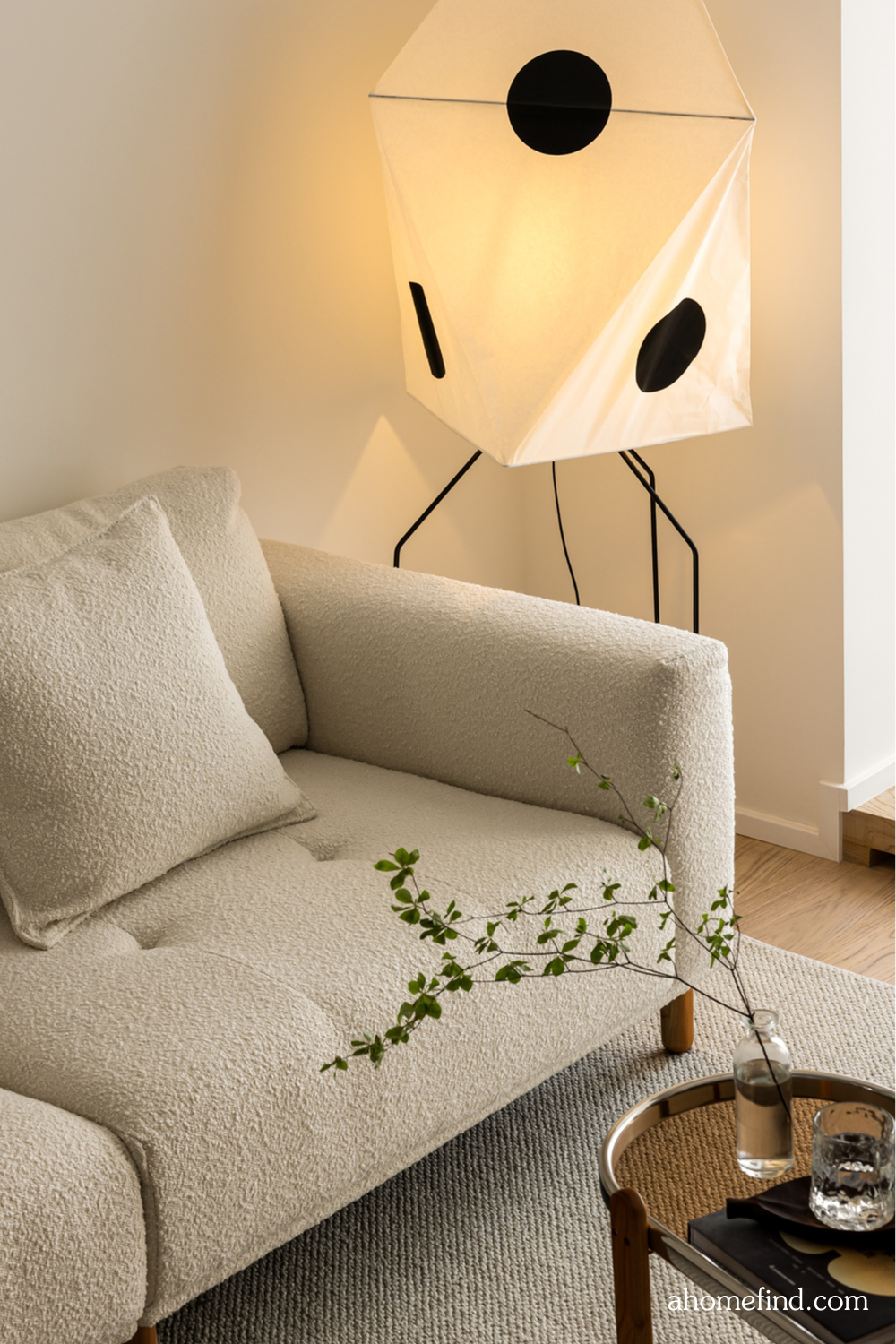
4. Layer Textures for a Cozy Japandi Living Room Feel
One important thing to make your room go from sterile to cozy and warm is by adding lots of textures. Think about how big of a difference a pair of curtains does. It changes the whole room. Here is a list of all the different textures you should include in your Japandi living room:
- Soft textiles: Linen curtains, wool throws or cotton cushions to add warmth.
- Natural elements: Woven elements like rattan baskets for an earthy feeling.
- Handmade ceramics: Artisanal pottery with organic shapes for an imperfect aesthetic.
- Rugs with natural fibers: Jute, wool or low-pile rugs to define the space and soften hard floors.
I think layering textures is so important in any kind of style – but especially in Japandi interior. The contrast of the rough and smooth textures truly add a sense of coziness and interest. It’s very important!
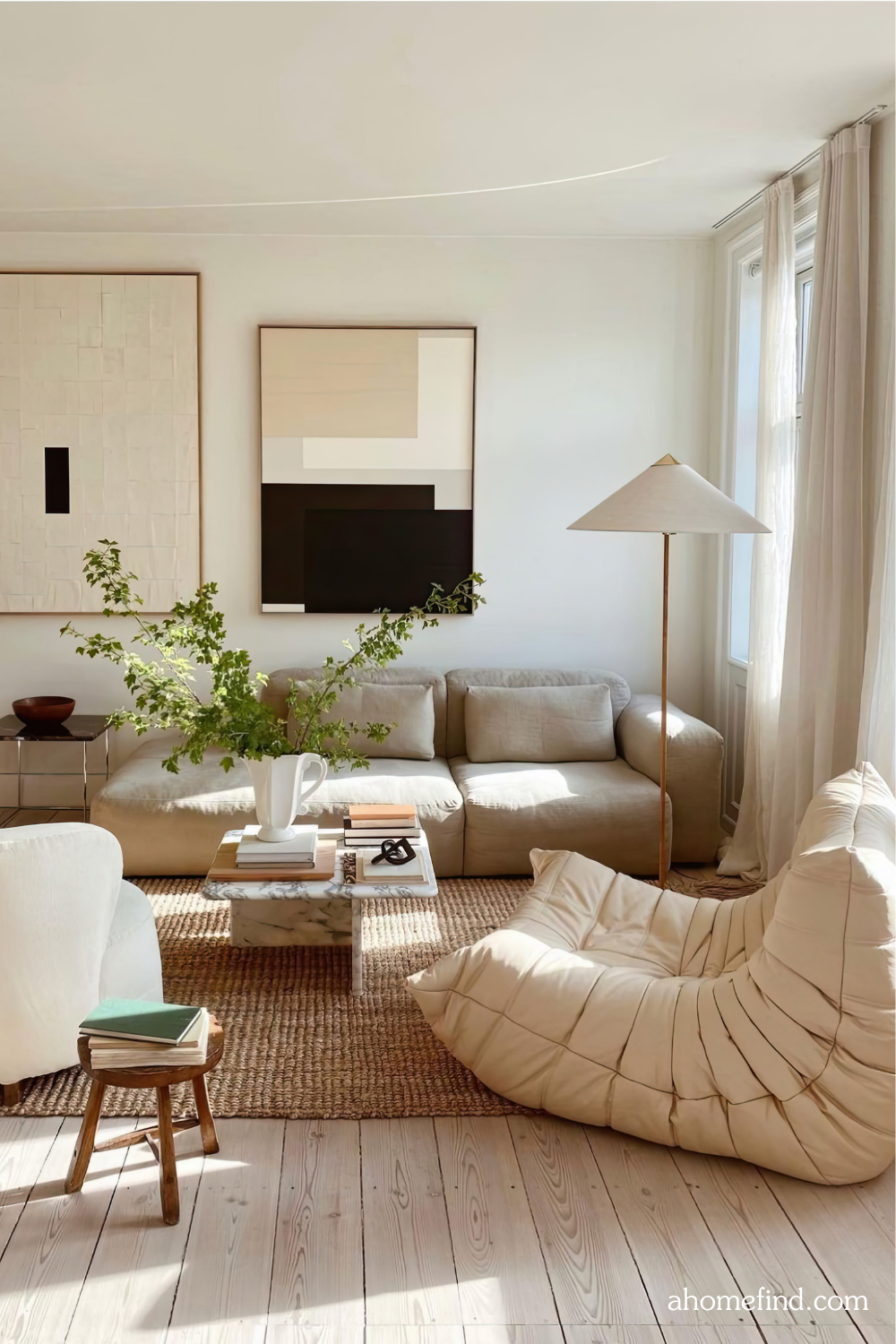
5. Incorporate Japandi Living Room Lighting for Ambience
As always, lighting plays a huge roll – even in Japandi interiors. The goal is to achieve a soft, warm and inviting glow. This is very important for the overall aesthetic of the room.
First of all, layer lighting, this will create the coziest atmosphere no matter the room. This means that you should combine pendant lights, floor lamps, table lamps and candles – where every lamp/candle gives a warm and soft glow.
If you want to include a signature Japanese touch you should also look for paper lanterns. These really creates a dreamy ambiance.
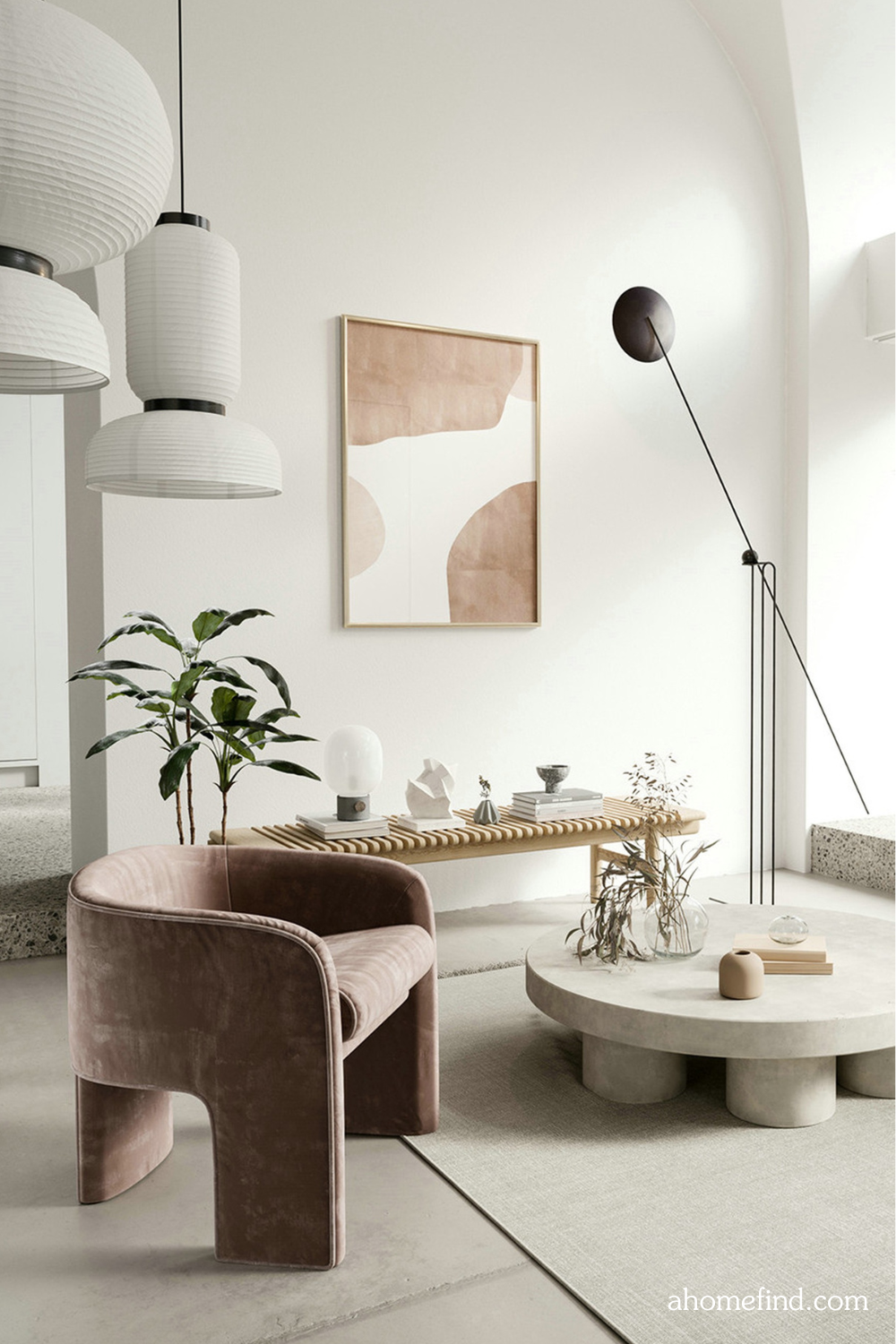
6. Bring Nature Indoors for a Japandi Living Room Aesthetic
For the finish touch it’s time to add some greenery. This will complete the space and add a touch of nature. However, when designing a Japandi living room you need to be careful with what kind of plants you choose. You need to keep it minimal which means no cluttered jungle vibes.
I’d say that you need at least one statement plant in every room. This could be a bonsai tree, olive tree or a snake plant. All of these are sculptural and elegant. Then you can also add a simple vase with dried branches. This is a beautiful way to create an organic touch.
To bring even more of the nature inside, you can finish off with adding some stone and wooden decor. This could be bowls, trays or sculptures – of course made of natural materials. These small touches will do so much for the space.
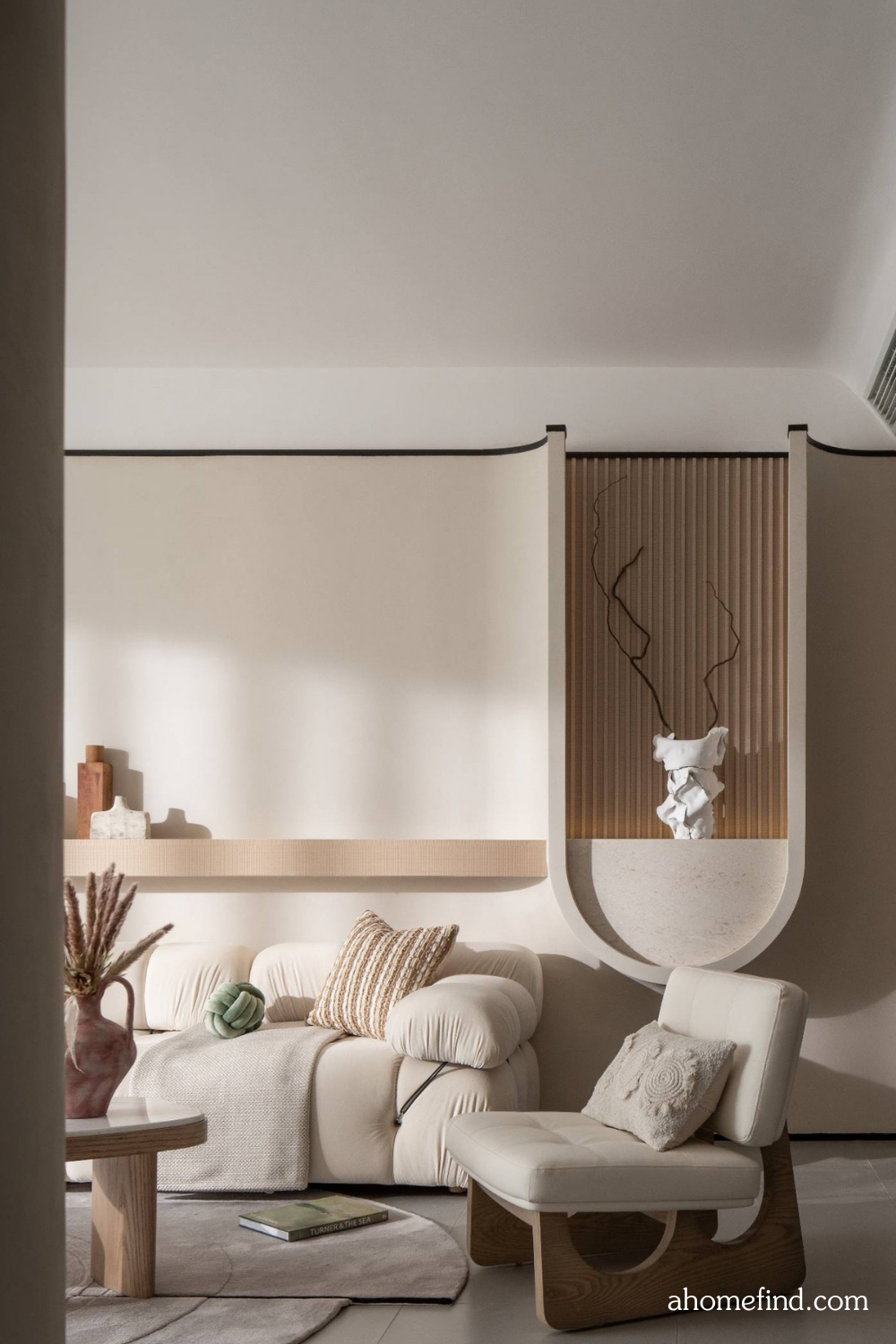
Final Thoughts
A Japandi living room is more than just a trend – it’s a way of creating a space that feels intentional, calming and beautiful. By choosing natural materials, neutral colors, minimal furniture and warm textures, you can achieve this timeless aesthetic in your own home.
Are you ready to embrace Japandi in your living room? Let me know your favorite element of this style in the comments!
Now, save your favorite pictures on Pinterest for later and don’t forget to check out more decor inspiration on the blog!

